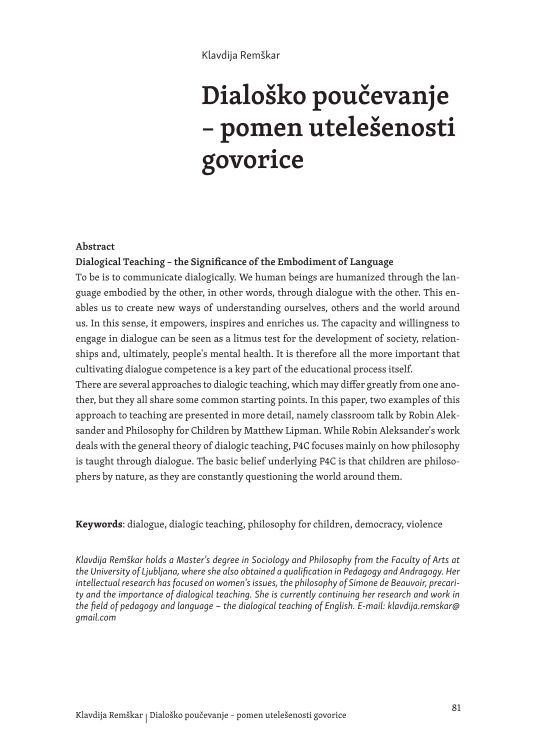To be is to communicate dialogically. We human beings are humanized through the language embodied by the other, in other words, through dialogue with the other. This enables us to create new ways of understanding ourselves, others and the world around us. In this sense, it empowers, inspires and enriches us. The capacity and willingness to engage in dialogue can be seen as a litmus test for the development of society, relationships and, ultimately, people's mental health. It is therefore all the more important that cultivating dialogue competence is a key part of the educational process itself.
There are several approaches to dialogic teaching, which may differ greatly from one another, but they all share some common starting points. In this paper, two examples of this approach to teaching are presented in more detail, namely classroom talk by Robin Aleksander and Philosophy for Children by Matthew Lipman. While Robin Aleksander's work deals with the general theory of dialogic teaching, P4C focuses mainly on how philosophy is taught through dialogue. The basic belief underlying P4C is that children are philosophers by nature, as they are constantly questioning the world around them.




